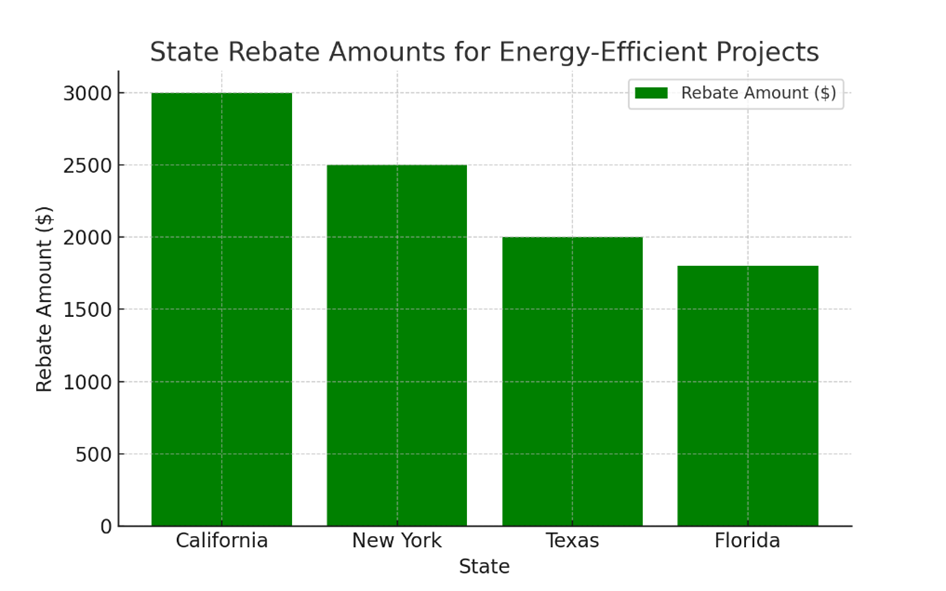Understanding Energy Rebates and Incentives
Energy Conservation ?? Comments 29/Jan/2025 WedEnergy rebates and incentives play a crucial role in encouraging individuals and businesses to adopt energy-efficient technologies and renewable energy systems. By leveraging these programs, households can significantly reduce the upfront costs of energy upgrades while contributing to broader sustainability goals. Below are some practical steps to maximize the benefits of energy rebates and incentives.
Practical Steps
-
Apply for Federal Tax Credits Like the Residential Clean Energy Credit
The U.S. government offers generous tax credits to incentivize the adoption of clean energy systems. One notable example is the Residential Clean Energy Credit, which provides a 30% federal tax credit for the installation of solar panels, solar water heaters, small wind turbines, and other qualifying renewable energy systems. This credit is applied to the total cost of installation, including equipment and labor, reducing the overall financial burden for homeowners. For example, if the total cost of installing solar panels is $20,000, the credit reduces the out-of-pocket expense by $6,000. This program also supports other clean energy upgrades, such as geothermal heat pumps and fuel cells, ensuring diverse options for homeowners.
-
Check State and Local Rebate Programs for Installing Energy-Efficient HVAC Systems
Many state and local governments, as well as utility companies, offer rebates for upgrading to energy-efficient heating, ventilation, and air conditioning (HVAC) systems. These programs typically target ENERGY STAR-certified equipment, which is designed to consume less energy while providing optimal performance. For instance, replacing an outdated central air conditioning system with a high-efficiency model could qualify for rebates ranging from $200 to $1,500, depending on the program. To find eligible rebates, homeowners can use resources like the Database of State Incentives for Renewables & Efficiency (DSIRE) or contact their local utility provider.
-
Explore Home Energy Audit Programs
Some states and utility companies offer free or subsidized home energy audits to identify areas where energy efficiency improvements can be made. These audits often come with rebates or discounts for implementing recommended upgrades, such as adding insulation, sealing air leaks, or replacing outdated appliances. In some cases, audit participants may qualify for low- or no-interest loans to finance larger energy efficiency projects.
-
Leverage Utility-Sponsored Demand Response Programs
Many utilities provide incentives for households that participate in demand response programs, which encourage consumers to reduce energy usage during peak hours. Participants may receive rebates, bill credits, or lower rates in exchange for using programmable thermostats or load-control devices that temporarily reduce energy consumption during high-demand periods. This not only lowers utility costs for individuals but also supports grid stability and efficiency.
-
Take Advantage of Electric Vehicle (EV) Incentives
Households transitioning to electric vehicles can benefit from numerous federal, state, and local incentives designed to offset the costs of EV purchases and home charging equipment. For instance, the federal Clean Vehicle Credit offers up to $7,500 for the purchase of qualifying EVs. Additionally, many states offer rebates or tax credits for installing Level 2 EV charging stations at home, making the switch to electric vehicles more affordable.
-
Investigate Low-Income Energy Assistance Programs
For low- and moderate-income households, specialized programs may provide enhanced rebates or grants to support energy efficiency improvements. Programs such as the Low Income Home Energy Assistance Program (LIHEAP) or the Weatherization Assistance Program (WAP) help reduce energy costs by funding energy efficiency upgrades, such as improved insulation, efficient windows, or upgraded HVAC systems.
-
Monitor Expiring or Time-Limited Incentives
Some rebates and incentives are time-sensitive or limited by budget constraints, so it’s important to stay informed about deadlines and application requirements. Subscribing to newsletters from energy agencies, utility companies, or local governments can help households stay updated on new or expiring programs.
-
Utilize Online Tools and Resources
Online platforms such as DSIRE and ENERGY STAR’s Rebate Finder allow homeowners to search for federal, state, and local energy rebates and incentives based on their location. These tools simplify the process of identifying eligible programs and understanding application requirements.
Key Benefits of Energy Rebates and Incentives
-
Cost Savings:
Rebates and tax credits significantly reduce the upfront costs of energy-efficient upgrades and renewable energy installations, making them more accessible to a broader range of households.
-
Encouragement of Sustainable Practices:
Incentives create a financial incentive for households to adopt environmentally friendly technologies, reducing energy consumption and greenhouse gas emissions.
-
Boost to Local Economies:
By promoting the adoption of energy-efficient technologies and renewable energy, rebate programs stimulate demand for local contractors, manufacturers, and service providers, creating jobs and supporting economic growth.
-
Increased Home Value:
Energy-efficient upgrades and renewable energy systems often increase property values, offering long-term financial benefits in addition to immediate savings.
By taking advantage of these practical steps and available programs, households can enjoy significant cost savings, reduce their environmental impact, and support the transition to a cleaner, more sustainable energy future.
Example: A couple in California received $3,000 in state rebates for installing a high-efficiency HVAC system, which reduced their heating and cooling costs by 30%.

Tags: energy